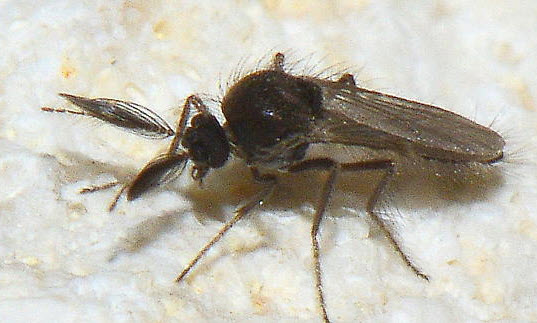If you’ve ever been outdoors during the summer months, particularly in areas with marshes, forests, or lakes, you may have encountered tiny, bothersome insects known as No-See-Ums. These minuscule creatures belong to the family Ceratopogonidae, a group of flies that often go unnoticed due to their size but can cause significant annoyance to humans and animals alike.
Ceratopogonidae is a diverse family of small flies, commonly referred to as biting midges or no-see-ums. With over 6,000 known species, they are one of the largest families of flies. Despite their diminutive size, typically ranging from 1 to 3 millimeters in length, their presence can be quite overwhelming in certain regions, especially during warm weather and around bodies of water.
No-See-Ums earned their name due to their small size, which makes them difficult to spot with the naked eye. Their ability to bite and feed on the blood of humans and other animals, however, ensures that they are anything but inconspicuous. While the bites themselves are not usually dangerous, they can cause intense itching, redness, and discomfort, leading to significant irritation for those affected.
These tiny flies are found in various parts of the world, with different species having adapted to specific habitats and environments. They are particularly prevalent in coastal areas, wetlands, and regions with high humidity, as these locations offer the necessary conditions for their reproduction and survival. No-See-Ums are most active during dawn and dusk when they tend to swarm, seeking out a blood meal.
One of the key characteristics of Ceratopogonidae flies is their intricate mouthparts, which are adapted for piercing the skin of their hosts. Female No-See-Ums require a blood meal to produce eggs, and they are the ones responsible for the itchy bites. Males, on the other hand, primarily feed on nectar and other sources of sugar. Despite their pesky nature, these flies also serve ecological roles as pollinators, contributing to the fertilization of various plant species.
To protect oneself from No-See-Um bites, individuals can take several precautions. Wearing long-sleeved clothing, using insect repellents, and utilizing fine-mesh screens or mosquito nets around windows and outdoor areas can all be effective strategies. Additionally, avoiding outdoor activities during peak activity times and in areas where these flies are known to thrive can help reduce the risk of encountering them.
It’s worth noting that the impact of No-See-Ums can extend beyond the realm of annoyance for humans. These flies can affect livestock and wildlife populations, causing economic losses in the agricultural sector. In some cases, they can also transmit diseases among animals, making them a concern for veterinary health.
No-See-Ums are a family of flies called Ceratopogonidae, known for their small size and irritating bites. Despite their inconspicuous nature, these tiny creatures can be a significant nuisance to humans and animals alike. Understanding their habits, habitats, and taking necessary precautions can help mitigate the annoyance and potential risks associated with these insects. So, the next time you venture outdoors, be mindful of these tiny but troublesome flies and take appropriate measures to protect yourself from their bites

